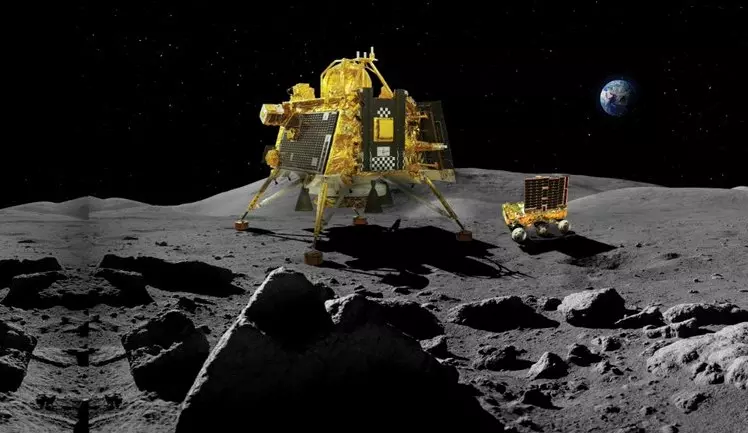
Pragyan Rover's instrument confirms sulphur’s presence on Moon
The Alpha Particle X-ray Spectroscope (APXS) has detected sulphur as well as other minor elements on the Moon, the Indian Space Research Organisation said

Pragyan, another instrument onboard the Chandrayaan-3 mission's rover, has confirmed the presence of sulphur in the Moon’s lunar region with a different technique, it was announced on Thursday.
The Alpha Particle X-ray Spectroscope (APXS) has detected sulphur as well as other minor elements on the Moon, the Bengaluru-headquartered Indian Space Research Organisation (ISRO) said.
"This finding by Ch-3 compels scientists to develop fresh explanations for the source of Sulphur (S) in the area: intrinsic? volcanic? meteoritic?......?" read an ISRO social media post.
ISRO also released a video of the rover rotating in search of a safe route. A lander imager camera captured the rotation.
"It feels as though a child is playfully frolicking in the yards of Chandamama while the mother watches affectionately. Isn't it?" ISRO remarked in the post.
APXS findings
The agency released a video showing an automated hinge mechanism rotating the 18 cm tall APXS, aligning the detector head to be approximately five centimetres in proximity to the lunar surface.
The 26-kg, six-wheeled, solar-powered Pragyan rover is equipped to use its scientific instruments to record what the lunar soil and rocks are made of in the south polar region where Chandrayaan-3 landed.
It will also show how the readings contrast with that of the highland regions.
APXS instrument is best suited for in-situ analysis of the elemental composition of soil and rocks on the surface of planetary bodies having little atmosphere like the Moon, an ISRO statement said.
It carries radioactive sources that emit alpha particles and X-rays onto the surface sample. The atoms present in the sample in turn emit characteristic X-ray lines corresponding to the elements present.
Further research
By measuring the energies and intensities of these characteristic X-rays, researchers can find the elements present and their abundances.
APXS observations have discovered the presence of interesting minor elements, including sulphur, apart from the major expected elements such as aluminum, silicon, calcium and iron.
The Laser Induced Breakdown Spectroscope (LIBS) instrument onboard the rover has already confirmed the presence of sulphur. Detailed scientific analysis of these observations is in progress.
(With agency inputs)

